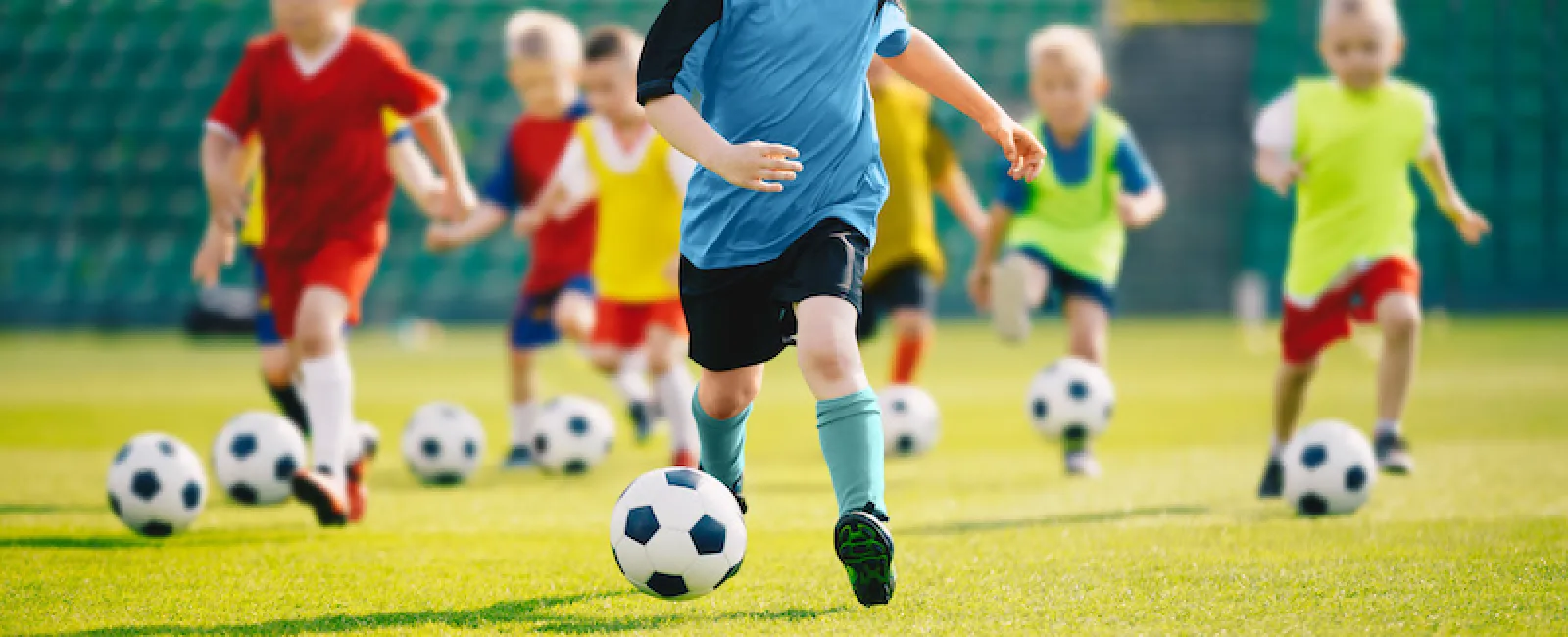
To protect your youth athlete, safety should always be the first priority. This will help ensure your child will have a positive experience and can remain focused on his or her overall health and performance.
Sports injuries can occur for a variety of reasons including improper diet, poor technique, repetitive use or even physical contact with strains, sprains and fractures among the most common types of injuries. If you want to protect your youth athlete from injury, it's important to understand all of the factors that might directly or indirectly affect them. Here are nine tips that may help:
1. Foster Healthy Communication
Building a foundation of trust from an early age will help foster healthy communication between you and your child. For young athletes, this can be especially important as more than 54% have reported playing even though they were injured. Fostering healthy communication can help your child feel comfortable coming to you if they are experiencing pain or any nagging sensation that could be a precursor to injury. It's important for them to understand that their safety is your number one priority-not winning or their athletic future. Often times not speaking up about a seemingly minor injury is due to fear of failure or disappointment, but left untreated even the most minor aches and pains have the potential to become serious.
2. Get a Preseason Physical
Generally, a sports physical is a requirement for participation in youth sports through schools, recreational leagues, and other organizations. If for some reason it is not required, it is important to get one anyway. Preseason psychical exams are the best way to get an overall picture of your youth athlete's health. It can help identify any issues that could hinder your child's athletic performance or that are detrimental to your child's safety. In some cases, a sports physical can be completed by your child's pediatrician in conjunction with an annual well-child visit.
3. Proper Warm-Ups
Before the sport starts or the practice starts, it's important for the young athlete's body to get ready. The best way to do this is through proper strengthening and conditioning. Stress the importance of proper warm-ups to your child and consult with his or her coach for any specific warm-ups that are best for their specific sport.
4. Don't Forget to Rest
Part of your role as a parent is helping your child learn to listen to his or her own body. All the warm-ups and practice in the world won't matter if he or she isn't getting adequate rest. This doesn't just mean taking a day off from activity, but also getting the proper amount of sleep each night. Taking the time to rest can help improve focus, prevent muscle fatigue and reduce the risk of injury.
5. Pay Attention to Diet
Proper nutrition is essential for anyone, but especially for anyone who lives an active lifestyle. Childhood and adolescence are critical stages of development that make proper nutrition even more important to lifetime health. Make sure your child is eating a well-balanced diet and a sufficient amount of calories based on their sport. This will help give them the energy they need to perform.
6. Keep Them Hydrated
Hydration is one of the most important things for any young athlete. One of the most important functions of water is to cool the body. As a child exercises, his muscles generate heat, raising his body temperature. When the body gets hot, it sweats. The evaporating sweat cools the body. If the child does not replace the water lost through sweating by drinking more fluids, the body's water balance will be upset and the body may overheat. To keep from becoming dehydrated, your child must drink fluids before, during and after exercise. Though water is ideal, fluids containing salt such as sports drinks have been shown to significantly increase voluntary drinking.
7. Use Proper Equipment
Another way to protect your youth athlete from injury is to ensure your child has the proper gear and that it fits correctly. This doesn't just include things like helmets and pads, but also their uniform and footwear.
8. Respond in a Timely Manner
Seemingly minor injuries can become more severe if not treated in a timely manner. If you suspect injury of any kind, make sure it is documented and seek medical attention from a healthcare professional right away. Continuing to play on an injury can not only lead to further damage but can also increase the risk of injuring other parts of the body as a result of compensating for the original injury.
9. Invest in Mental and Emotional Health
Sports aren't just physically demanding, but mentally and emotionally as well. Helping your child learn to focus on these areas of their health as well can improve their focus, ability to manage pain and overcome any social challenges that may occur when playing on a team or competing with others. When he or she is able to focus, they'll pay more attention to details like form, posture and their surroundings.
Contact South Shore Orthopedics
Despite best efforts to prevent them, accidents and injuries do happen. Participating in youth sports or any physical activity increases the risk, so it's important to know what to do if your child does get injured. The team at South Shore Orthopedics in Hingham, Massachusetts, specializes in providing care and prevention for a variety of sports and activity-related injuries for children, teens, and adults.
Our knowledgeable team of providers works together to diagnose and treat sport and activity-related injuries while counseling patients on the correct training and best practices that can significantly reduce their risk of injury. To schedule an appointment, call (781) 337-5555.
